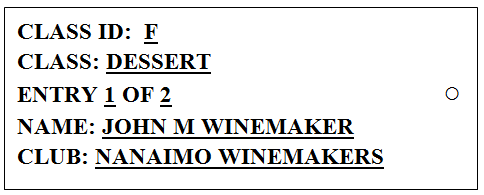Although the appearance of the wine will be judged in the glass rather than in the bottle, the Competitor should bear in mind that the Judges will see the bottles and may be prejudiced by sloppy presentation. The Table Stewards will handle the bottles as carefully as possible, but a deposit that is not firm could be stirred up, cloud the wine, and detract from its appearance in the glass, thus losing points.
-
It is strongly recommended that every bottle be opened and tasted, then topped up before being entered. Without that precaution corked, oxidized, or otherwise faulty or flawed bottles may end up on the judging table.
-
Wines are to be presented in bottles with a minimum 375ml capacity unless 750ml is stipulated, e.g., for table classes. This leaves the type of bottle, its shape, colour and closure to the discretion of the Competitor. No capsule or potential identifying feature (including winery-branded corks or caps) may be used.
-
Sparkling wines may be entered only in the Sparkling Class, and must be presented in thick-walled sparkling wine glass bottles for safety. They must not contain sediment.
-
Beers and Ciders are to be presented in glass or plastic beer bottles of approximately 350ml capacity with appropriate closures.
-
The only identification must be in the form of a Bottle Tag (luggage tags are ideal, but tags may be made easily from file folders) attached to the bottle neck by an elastic band through the hole in the tag so it will not come off accidentally, but may be easily removed. The sketch below indicates the form of the label and the information required: Competitor's Name and Club, Class ID, Class Name, and Designation of “Entry 1” or “Entry 2” as shown, so that after the Competition the Competitor will know to which entry the Judges' Comments refer. Beer entry tags should include the Subclass ID.
-
The Wine and/or Beer Entry Form must be enclosed with the entries.
